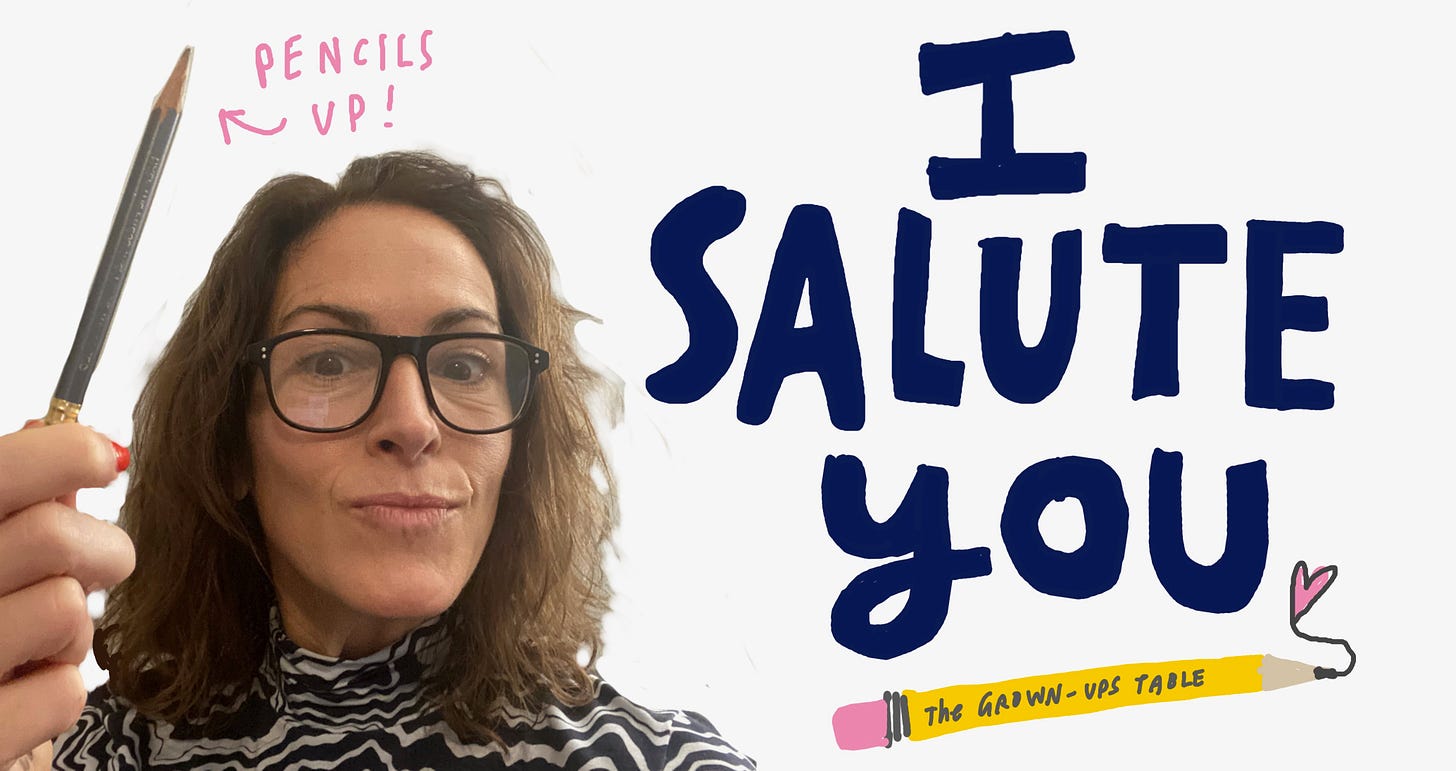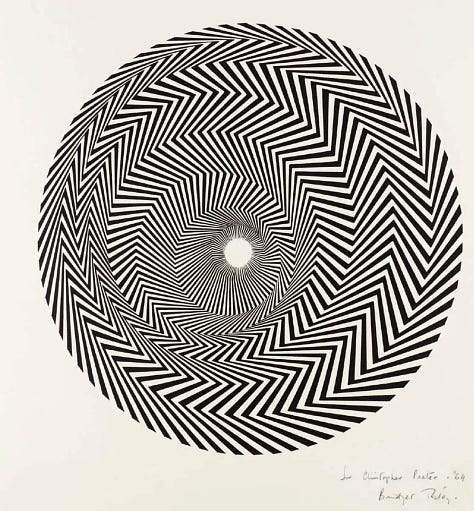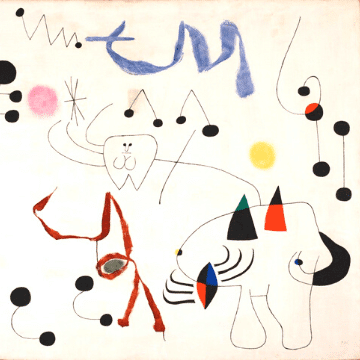Day 2. Doodling our way into drawing
Some simple loopy drawings can change our heart, mind, and body.
Hi DrawTogether Grown-Ups Table humans!
NICE WORK EVERYONE.
To each and every one of you who kicked off 2024 and the 30-Day Drawing Habit yesterday with the Julia Rothman-inspired More/Less New Year’s drawings…

Now, we’re ready to enter the year - and the rest of the 30-day Drawing Habit - with our intentions set. Eyes, hearts, and minds wide open. Pens and pencils ready.
Small housekeeping notes:
A’s to your Q’s about the chat, etc. We’re creating a FAQ to answer your questions about sharing in the chat and such. I’ll send it as a separate email, so keep your eyes open. Meanwhile, please continue to leave any questions you have in the comments below. Art Auntie Kathleen and I will do our best to answer quickly.
Take this 3-minute survey! I’m researching how drawing practices and participating in a creative community impacts our well-being, and I want to hear your thoughts. If you’re participating in this 30-Day Drawing Habit, and haven’t already completed this pre-survey, DO IT TODAY!
SMALL GUT GROUPS. Some people expressed interest in forming small 30-Day Drawing Habit accountability groups. More information and a signup spreadsheet for paying subscribers is at the bottom of this dispatch.
Now we’re really ready…
The Basics Elements of Drawing
I think it’s useful for everyone interested in drawing to learn (or refresh their memory on) the basics of visual art. Kind of like knowing what you have in the fridge so you can decide what you want to cook for dinner.
Drawing, and all visual art, really, is comprised of seven elements: line, color, shape, form, value, space, and texture. That’s it. Simple, right? When we draw, those are the seven elements we have to work with. You can make ANYTHING with those seven things.
To me, the most fundamental element in drawing is LINE. When you imagine a drawing, what do you see? I feel confident it probably has some lines in it. Here are three very different kinds of line drawings by three different artists.



Radically diverse results, each dependent on lines.
There are seven types of lines we use when drawing: horizontal, vertical, or diagonal; straight or curved; thick or thin. That’s it. Those are all the types of lines. When you make a drawing using lines, it’s called a line drawing. Line drawings can be made with any medium. They can be representational (meaning they are intended to look like something), abstract (not designed to look like something), and conceptual (they represent an idea.) A line drawing can be the basis for another drawing or painting, as in a sketch, or it can be a finished piece unto itself.
That’s it! All of drawing in a nutshell. You get an A+. The diploma is in the mail. (Want some extra credit? Here’s a warmup exercise for drawing the seven types of lines.)
This week, we will use a few of the elements of drawing, and probably all the types of lines. But we aren’t going to use them to create formal drawings. We’re going to use them to make DOODLES.
Week One: Daily Doodles
Cool? Cool. But, you ask, why dedicate a whole week to a practice with such a sketchy reputation? (Har har.)
The Oxford English Dictionary defines the doodle as “An aimless scrawl made by a person while his mind is more or less otherwise applied.” OED, you’re fancy and all, but I think you’re totally WRONG.
I honestly believe doodles contain creative magic. Doodling is a powerful way to improve memory, process emotions, and practice drawing skills. And I’m not the only one who thinks this way.
author of The Doodle Revolution (and a GUT member! Everyone say “Hi Sunni!”) is amongst a growing group of doodle advocates who believe doodling is not mindless business. “My definition of doodling is to make spontaneous marks with your mind and your body in order to help yourself think,” she told me. Sunni believes the point of doodling is not to make a “good drawing”, but to help your brain process information. And there’s quite a bit of science to back this up.According to a study by Jackie Andrade, PhD, 29% of people who doodle find it easier to recall information than those who don’t. Turns out that people who do not doodle are more likely to space out and daydream. (Take that, high school English teacher who gave me lunch detention for doodling in class!) Doodling helps us FOCUS.
Ivy Ross and Susan Magsamen cited this study and others in their fantastic book Your Brain on Art:
“Doodling, coloring, and free drawing all activate the prefrontal cortex, the area of the brain that helps us focus and find meaning in sensory information…doodling increases blood flow and triggers feelings of pleasure and reward… Doodlers are more analytical, retain information better, and are better focused than their non-doodler colleagues.”
There is also some research on the emotional benefits of doodling. This study that discusses doodling’s impact on stress dates all the way back to 1938! And this fascinating paper on doodling published in The Lancet states: “Providing pencil and paper to the anxious, the distressed, and the disturbed might even have unexpected therapeutic benefits.” (GUT peeps could have told them that.🙄)
“OK, Wendy. I’m convinced. But what is the difference between a doodle and a line drawing?”
Personally, I believe there’s one big difference between doodling and drawing: the artist’s intention. Beyond that, who knows? And who cares! We’re moving our hands and making things. It helps our mind, heart, body, and soul. That’s all that matters.
So, enough talking about why we draw/doodle. Let’s put the DO in Doodle.




